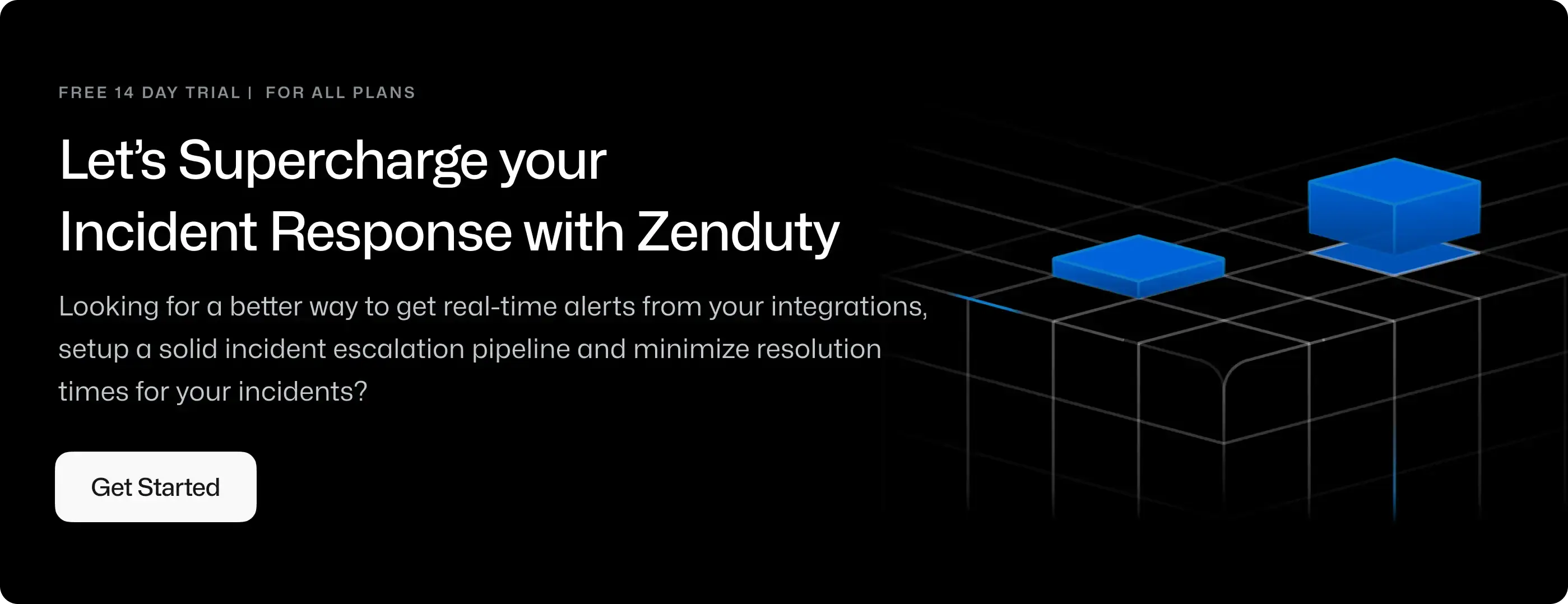Freshdesk Integration Guide
Freshdesk is a popular helpdesk system and customer service solution that simplifies customer service for your team and helps them provide a great customer experience.
What can Zenduty do for Freshdesk users?
With the Freshdesk Integration, Zenduty sends new ticket alerts to the right support engineer or team and notifies them based on on-call schedules via email, text messages(SMS), phone calls(Voice), Slack, Microsoft Teams and iOS & Android push notifications, and escalates alerts until the alert is acknowledged or closed. Zenduty provides your support engineers with detailed context around the Freshdesk ticket alert along with support playbooks and a complete incident command framework to triage and remediate and resolve incidents with speed.
Whenever a ticket is created in Freshdesk, Zenduty will create an incident. When the ticket status is updated to Pending, Zenduty will auto-ackknowledge the incident. When the ticket is resolved on Freshdesk, Zenduty will auto-resolve the ticket.
You can also use Alert Rules to custom route specific Freshdesk alerts to specific support engineers, staff, teams or escalation policies, write suppression rules, auto add notes, responders and incident tasks.
To integrate Freshdesk with Zenduty, complete the following steps:
On the Zenduty Dashboard:
-
To add a new Freshdesk integration, go to Teams on Zenduty and click on the team you want to add the integration to.
-
Next, go to Services and click on the relevant Service.
-
Go to Integrations and then Add New Integration. Give it a name and select the application Freshdesk from the dropdown menu.
-
Go to Configure under your Integrations and copy the Webhook URL generated.
In Freshdesk:
-
Log into Freshdesk. Click on the Admin button and select Automations under Helpdesk Productivity Settings.

-
Click on the Create the first rule button.

-
Select New Rule and pick Rule Name and Description. Set Conditions as:
Type Is Incident

-
Select Trigger Webhook from the Actions dropdown, and set Request Type to POST.
-
Under the 'URL', paste the Webhook URL you copied earlier.
-
Set the 'Encoding' as JSON and content as 'Simple'.
-
Under 'Content', select the following fields- Ticket ID, Subject, Description, Status, Ticket URL.
This is shown in the screenshot below:

-
Save.
-
From the same window, move to Ticket Update sections and click on New Rule button.

-
Select New Rule and pick a Rule Name and Description.
-
Set Action Performed By to Agent and an Event. For example, here we have picked: Status is Changed from Any Status to Any Status and so on depending upon the requirements.


-
In the On tickets with these properties section, set condition as Type Is and Incident.

-
Select Trigger Webhook from the Actions dropdown and set the Request Type to POST.
-
In the URL textbox, paste the Webhook link you copied earlier.
-
Set the Encoding to JSON and Content to Simple.
-
Under Content, Select all the fields under Content, including and especially Ticket ID, Subject, Description, Status and Ticket URL.
This is shown in the screenshot below:

- Save.
Freshdesk is now integrated to your Zenduty account.
